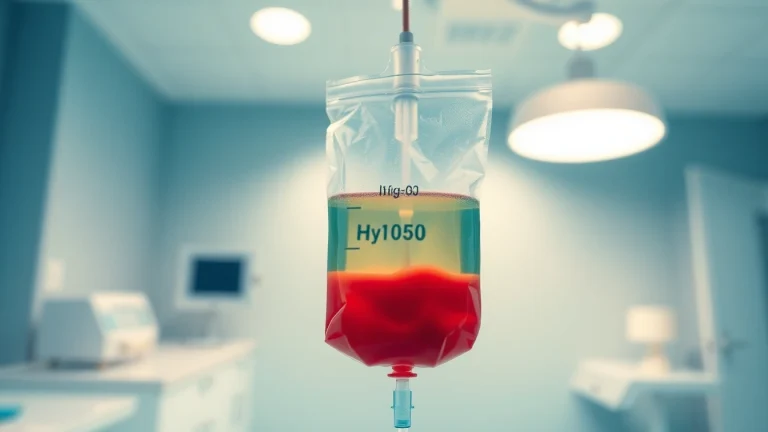
Understanding Paranoid Personality Disorder: Signs, Symptoms, and Treatment Options
Introduction to Paranoid Personality Disorder
Paranoid Personality Disorder (PPD) is a complex mental health condition characterized by persistent and pervasive distrust of others. Individuals with PPD often interpret motives as malevolent, leading to significant interpersonal challenges and a skewed perception of reality. Understanding PPD is crucial, as it affects how individuals relate to family, friends, and colleagues, often resulting in strained relationships. To learn more about this condition, you can explore further insights on paranoid personality disorder.
Defining Paranoid Personality Disorder
Pervasive distrust and suspicion characterize Paranoid Personality Disorder, typically manifesting in childhood or early adulthood. Individuals may often believe that they are being exploited, harmed, or deceived, even without concrete evidence. This psychological framework leads to a defensive posture in social situations, where the individual may withdraw or react with hostility towards perceived threats. Defining PPD involves recognizing symptoms such as excessive jealousy, recurrent suspicions about infidelity in romantic relationships, and an unwillingness to confide in others due to fear that information will be used maliciously against them.
Prevalence and Demographics
Research indicates that Paranoid Personality Disorder affects approximately 2-4% of the general population. While it can occur in both men and women, prevalence rates suggest a slightly higher incidence in men. The onset of symptoms typically emerges in adolescence or early adulthood and can drastically affect individuals’ social, occupational, and academic functioning. In terms of demographics, PPD is more prevalent in populations with a history of familial mental illness or borderline personality disorders, indicating a potential genetic or environmental link.
Common Misconceptions
Misconceptions about Paranoid Personality Disorder can hinder understanding and affect the stigma surrounding mental health conditions. One common myth is that individuals with PPD are just “overly cautious” or “difficult.” While a healthy sense of skepticism is normal, PPD involves debilitating mistrust that hinders relationships. Additionally, people often mistake PPD for other personality disorders, such as borderline or antisocial personality disorder, due to overlapping symptoms. Understanding the distinct features of PPD is critical for proper diagnosis and effective treatment.
Symptoms and Diagnosis Criteria
Recognizing Key Symptoms of Paranoid Personality Disorder
The symptoms of Paranoid Personality Disorder can vary, but they generally include:
- Pervasive distrust: Individuals believe others are constantly trying to harm or deceive them, often without real evidence.
- Suspicions of infidelity: They may unjustifiably suspect partners of cheating.
- Fear of confiding: A reluctance to share personal information due to fear it may be misused.
- Hostility: Reactions to perceived slights can include anger, accusations, or physical aggression.
- Rigid thinking: A tendency to hold onto delusions and misinterpret situations.
Recognizing these symptoms can offer a pivotal step in early diagnosis and intervention.
Diagnostic Evaluation Processes
The diagnosis of Paranoid Personality Disorder is typically conducted by a mental health professional through comprehensive clinical interviews. The specialist will assess the individual’s history, behavior, and symptoms against established diagnostic criteria from the Diagnostic and Statistical Manual of Mental Disorders (DSM-5). Necessary evaluations include psychological testing, observation of interpersonal skills, and obtaining collateral information from family members or close companions to understand the context of behaviors better.
Common Co-occurring Conditions
Individuals with PPD often experience co-occurring disorders that can complicate diagnosis and treatment. These may include:
- Depression: Chronic mistrust can lead to feelings of isolation, potentially triggering depressive episodes.
- Anxiety Disorders: High levels of mistrust and fear frequently manifest as anxiety, influencing daily functioning.
- Substance Use Disorders: As a coping mechanism, some individuals may turn to drugs or alcohol, leading to additional challenges in treatment.
- Other Personality Disorders: Traits from other disorders, such as borderline or antisocial personality disorders, may co-occur, complicating the therapeutic approach.
Causes and Risk Factors
Genetic and Biological Influences
Research suggests that genetics may play a role in the development of Paranoid Personality Disorder. Family histories of mental health issues, particularly in first-degree relatives, have shown a higher prevalence of PPD in subsequent generations. Neurobiological factors, such as neurotransmitter imbalances—specifically those involving dopamine—may also contribute to a person’s predisposition towards paranoia. Understanding these biological underpinnings can help psychiatrists devise more targeted treatment strategies.
Environmental and Psychological Contributors
Environmental factors significantly shape the experiences of those with PPD. Family dynamics, particularly during childhood, influence personality development; for instance, experiencing an unstable home, witnessing domestic violence, or enduring neglect can sow the seeds for developing paranoid traits. Psychological contributors may involve a history of traumatic experiences, which can inform a child’s worldview shaped by fear and distrust.
Link to Trauma and Abuse History
A considerable body of evidence indicates that individuals with a history of trauma or abuse are more prone to developing Paranoid Personality Disorder. This might include physical abuse, emotional neglect, or sexual abuse during formative years, leading individuals to adopt a self-protective stance against an unpredictable environment. Understanding trauma’s impact is vital for clinicians when treating patients with PPD, as addressing past wounds may be necessary for effective treatment.
Treatment Options for Paranoid Personality Disorder
Psychotherapy Approaches and Effectiveness
Psychotherapy is often the cornerstone of treatment for Paranoid Personality Disorder. Cognitive behavioral therapy (CBT) is particularly promising, as it helps individuals recognize and modify irrational thoughts and beliefs. CBT encourages patients to examine evidence for and against their suspicions, fostering a more balanced perspective. Therapy can also enhance interpersonal skills, teaching individuals how to communicate their needs and fears more effectively.
Additionally, dialectical behavior therapy (DBT) and supportive therapy can be beneficial, focusing on emotional regulation and interpersonal effectiveness. Long-term therapy can provide a safe space for individuals to express their feelings and build trust with their therapist, ultimately leading to improved mental health outcomes.
Medications: Pros and Cons
While there are no specific medications approved for treating Paranoid Personality Disorder, pharmacological options may address accompanying symptoms like anxiety or depression. Antidepressants, anti-anxiety medications, and antipsychotics can sometimes be prescribed judiciously. However, care must be taken with medication management, as individuals with PPD may mistrust their prescriber, fearing manipulation through medications. The pros include improved mood and reduced anxiety, while cons involve potential side effects and the risk of dependence on medication.
Self-help Strategies and Support Systems
In conjunction with professional treatment, self-help strategies can significantly bolster recovery for individuals with Paranoid Personality Disorder. Some practical approaches include:
- Journaling: Writing down thoughts can clarify feelings and reduce the impact of paranoia.
- Mindfulness and relaxation techniques: Practicing mindfulness can help individuals stay grounded and diminish anxiety.
- Education: Learning about PPD can dispel myths and improve understanding of personal experiences.
- Support groups: Engaging with others facing similar challenges can foster empathy and provide insights into coping mechanisms.
Developing a robust support network, including friends, family, and mental health professionals, creates an environment conducive to healing.
Living with Paranoid Personality Disorder
Coping Mechanisms and Strategies
Living with Paranoid Personality Disorder presents unique challenges, requiring individuals to adopt effective coping strategies. Developing a strong awareness of triggers is essential, as is practicing emotional regulation techniques to manage anxiety and irritability. Emphasizing self-care routines that include healthy eating, regular physical activity, and adequate rest can enhance overall well-being. Strong coping mechanisms, including problem-solving skills and seeking social support, can significantly improve quality of life.
Building Support Networks
A supportive network is essential for individuals coping with PPD. Engaging family and friends as allies can help individuals gain perspective and feel less isolated. It’s important to communicate openly about needs and fears, seeking understanding instead of judgment. Joining support groups or connecting with professionals experienced in mental health can provide validation and resources for navigating relationships and emotional challenges.
Case Studies and Real-life Experiences
Real-world case studies illustrate the diverse experiences of individuals living with Paranoid Personality Disorder. For instance, one case study highlights a woman named Sarah who struggled with intense fear of betrayal in her marriage. Through ongoing therapy, she learned to communicate her feelings and gradually began to trust her partner, allowing for greater intimacy in their relationship. Another case study features a man named John whose paranoia led to job loss after he avoided working with colleagues out of fear of deception. Participating in a structured support program helped him acquire management skills to rebuild his professional life.
These experiences emphasize the importance of ongoing support and therapeutic engagement in managing Paranoid Personality Disorder effectively.


